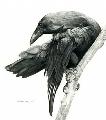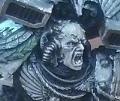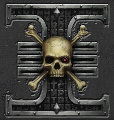| Author |
Message |
 |
|
|
 |
|
Advert
|
Forum adverts like this one are shown to any user who is not logged in. Join us by filling out a tiny 3 field form and you will get your own, free, dakka user account which gives a good range of benefits to you:
- No adverts like this in the forums anymore.
- Times and dates in your local timezone.
- Full tracking of what you have read so you can skip to your first unread post, easily see what has changed since you last logged in, and easily see what is new at a glance.
- Email notifications for threads you want to watch closely.
- Being a part of the oldest wargaming community on the net.
If you are already a member then feel free to login now. |
|
 |
![[Post New]](/s/i/i.gif) 2018/02/20 14:58:42
Subject: Ideas on how to "carve" sections out of armor to make Recess?
|
 |

Crafty Clanrat
|
Hello All,
I'm about to make my first attempt at conversions and heavy Greenstuff work and hoping someone can give some suggestions. I plan to convert Primaris Armor to be similar to the "Muscle" look on Maphiston and Astorath for my Blood Angels.
The Torso section is simple enough because i can simply smooth and lay the greenstuff work on top, but I'm trying to figure out a good way to Carve Sections out of the Arms and legs.
Specifically if you look at Astorath's Armor you can see on his legs and arms there are recess sections. What suggestions do you guys have that would be a good way to basically cut out sections?

|
|
|
 |
 |
![[Post New]](/s/i/i.gif) 2018/02/20 15:41:22
Subject: Ideas on how to "carve" sections out of armor to make Recess?
|
 |

Ork-Hunting Inquisitorial Xenokiller
|
Surely the way to get that effect is to lay down the muscled green stuff, then add a raised layer of thinly rolled and cut green stuff over the top?
|
|
|
 |
 |
![[Post New]](/s/i/i.gif) 2018/02/20 15:43:55
Subject: Ideas on how to "carve" sections out of armor to make Recess?
|
 |

Regular Dakkanaut
|
Something you might want to experiment with is Heat. (Assuming non metal mini)
If you have a hot plate or some other constant heat source you can turn it on and set it to the side. Then, get some high gauge, stiff wire, like steel or some such, and cut off several lengths. Then take those lengths and stick them in corks. the tips of the cut wire may need to be shaped as your needs require. After you are set up, put the wires on your hot plate and let them get up to temp, then practice on some scrap plastic making lines and the like with your improvised stylists. Just remember that the wire will cool very quickly so you will have to get a feel for what you can do with each wire.
(NOTE: DEPENDING ON THE MATERIAL, FUMES THAT ARE PRODUCED CAN BE DANGEROUS, PLEASE IMPLEMENT NECESSARY PRECAUTIONS WHEN WORKING IN THIS FASHION)
|
|
|
 |
 |
![[Post New]](/s/i/i.gif) 2018/02/20 16:04:47
Subject: Ideas on how to "carve" sections out of armor to make Recess?
|
 |

Crafty Clanrat
|
Fictional wrote:Surely the way to get that effect is to lay down the muscled green stuff, then add a raised layer of thinly rolled and cut green stuff over the top?
Well my first thought is the Armor is already bulky and I don't want to make them swell in size so I think removing some to have it look more natural to the Primaris size is better.
SaganGree wrote:Something you might want to experiment with is Heat. (Assuming non metal mini)
If you have a hot plate or some other constant heat source you can turn it on and set it to the side. Then, get some high gauge, stiff wire, like steel or some such, and cut off several lengths. Then take those lengths and stick them in corks. the tips of the cut wire may need to be shaped as your needs require. After you are set up, put the wires on your hot plate and let them get up to temp, then practice on some scrap plastic making lines and the like with your improvised stylists. Just remember that the wire will cool very quickly so you will have to get a feel for what you can do with each wire.
(NOTE: DEPENDING ON THE MATERIAL, FUMES THAT ARE PRODUCED CAN BE DANGEROUS, PLEASE IMPLEMENT NECESSARY PRECAUTIONS WHEN WORKING IN THIS FASHION)
This is an interesting Idea I had not thought of. Similar to wood burning or Styrofoam cutting tools to easily remove pieces. I wonder how cleanly this would work on GW plastics.
Automatically Appended Next Post: SaganGree wrote:Something you might want to experiment with is Heat. (Assuming non metal mini)
If you have a hot plate or some other constant heat source you can turn it on and set it to the side. Then, get some high gauge, stiff wire, like steel or some such, and cut off several lengths. Then take those lengths and stick them in corks. the tips of the cut wire may need to be shaped as your needs require. After you are set up, put the wires on your hot plate and let them get up to temp, then practice on some scrap plastic making lines and the like with your improvised stylists. Just remember that the wire will cool very quickly so you will have to get a feel for what you can do with each wire.
(NOTE: DEPENDING ON THE MATERIAL, FUMES THAT ARE PRODUCED CAN BE DANGEROUS, PLEASE IMPLEMENT NECESSARY PRECAUTIONS WHEN WORKING IN THIS FASHION)
I'm wondering if a wood burning tool would actually be hot enough o do this now like this:
https://www.amazon.com/Walnut-Hollow-Versa-Temp-Temperature-Woodburning/dp/B005P1TRAS/ref=pd_sbs_469_1?_encoding=UTF8&pd_rd_i=B005P1TRAS&pd_rd_r=7SW8ASYNGRAH4G8KW9J8&pd_rd_w=qDXE2&pd_rd_wg=YL5VS&psc=1&refRID=7SW8ASYNGRAH4G8KW9J8
|
|
This message was edited 1 time. Last update was at 2018/02/20 16:51:49
|
|
|
 |
 |
![[Post New]](/s/i/i.gif) 2018/02/20 17:27:59
Subject: Ideas on how to "carve" sections out of armor to make Recess?
|
 |

Ork-Hunting Inquisitorial Xenokiller
|
The wood burning tool is basically a soldering iron with fancy tips.
I'm pretty certain it will melt GW plastic unless its particularly low temperature.
|
|
|
 |
 |
![[Post New]](/s/i/i.gif) 2018/02/20 18:01:59
Subject: Ideas on how to "carve" sections out of armor to make Recess?
|
 |

Frenzied Berserker Terminator
|
You can do that with a hobby knife.
Start slowly with the knife edge to make a guide cut, perhaps over top of a pencil mark. Once you have a groove to follow flip your blade over and use the flat edge. This will remove material as opposed to separating it. Go gently and slowly, perhaps starting all the cuts on one section before completing one groove so that the depth and spacing is retained uniformly.
I see no reason why this wouldn't work. Practice on some junk plastic or sprue before attacking the mini.
Automatically Appended Next Post:
To get those shaped sections out of the arm areas with a hobby knife...
Trace the section out and make a guide cut, then remove the material through the guide cut with the back of your blade. Once your section is outlined thus you can then use the aforementioned approach to create several lines in the section. Don't worry about keeping things even at this point because this is just to lower the interior space to a depth where you can then etch out your grooves in detail. Once your initial lines are cut into place it will a simple task to carve them out with your hobby knife down to the desired depth.
This is a technique used in carpentry to cut out recesses in wood with a chisel and should work fine on plastic.
|
|
This message was edited 1 time. Last update was at 2018/02/20 18:24:36

Gets along better with animals... Go figure. |
|
|
 |
 |
![[Post New]](/s/i/i.gif) 2018/02/20 18:30:29
Subject: Ideas on how to "carve" sections out of armor to make Recess?
|
 |

Crafty Clanrat
|
 darkcloak wrote: darkcloak wrote:You can do that with a hobby knife.
Start slowly with the knife edge to make a guide cut, perhaps over top of a pencil mark. Once you have a groove to follow flip your blade over and use the flat edge. This will remove material as opposed to separating it. Go gently and slowly, perhaps starting all the cuts on one section before completing one groove so that the depth and spacing is retained uniformly.
I see no reason why this wouldn't work. Practice on some junk plastic or sprue before attacking the mini.
Automatically Appended Next Post:
To get those shaped sections out of the arm areas with a hobby knife...
Trace the section out and make a guide cut, then remove the material through the guide cut with the back of your blade. Once your section is outlined thus you can then use the aforementioned approach to create several lines in the section. Don't worry about keeping things even at this point because this is just to lower the interior space to a depth where you can then etch out your grooves in detail. Once your initial lines are cut into place it will a simple task to carve them out with your hobby knife down to the desired depth.
This is a technique used in carpentry to cut out recesses in wood with a chisel and should work fine on plastic.
This sounds like the most user friendly approach. I don't have to worry about fumes, etc. This was very helpful and i know exactly the technique you are talking about here. I'll give this a go before i dive down the melting route. Thanks for the input!
|
|
|
 |
 |
![[Post New]](/s/i/i.gif) 2018/02/20 18:36:18
Subject: Ideas on how to "carve" sections out of armor to make Recess?
|
 |

Legendary Master of the Chapter
|
Its a shame the new plastic jump chapa is only half muscled.
personally id say chop up the guy it self and save your self the hassle of sculpting those lines.
alternatively chaos has a lot of armor bits that are segmented like that already, you would just need to fill it in with green stuff lines.
|
 Unit1126PLL wrote: Unit1126PLL wrote: Scott-S6 wrote: Scott-S6 wrote:And yet another thread is hijacked for Unit to ask for the same advice, receive the same answers and make the same excuses.
Oh my god I'm becoming martel.
Send help!
|
|
|
 |
 |
![[Post New]](/s/i/i.gif) 2018/02/20 18:46:51
Subject: Ideas on how to "carve" sections out of armor to make Recess?
|
 |

Crafty Clanrat
|
 Desubot wrote: Desubot wrote:Its a shame the new plastic jump chapa is only half muscled.
personally id say chop up the guy it self and save your self the hassle of sculpting those lines.
alternatively chaos has a lot of armor bits that are segmented like that already, you would just need to fill it in with green stuff lines.
So my main plan is to sculpt the main sections once, then make a bluestuff half mold. Then i can simply clean and apply greenstuff to the model, then press the pieces into the bluestuff to "quick sculpt" then cleanup any excess.
|
|
|
 |
 |
![[Post New]](/s/i/i.gif) 2018/02/20 21:19:04
Subject: Ideas on how to "carve" sections out of armor to make Recess?
|
 |

Frenzied Berserker Terminator
|
 Immortalized wrote: Immortalized wrote: darkcloak wrote: darkcloak wrote:You can do that with a hobby knife.
Start slowly with the knife edge to make a guide cut, perhaps over top of a pencil mark. Once you have a groove to follow flip your blade over and use the flat edge. This will remove material as opposed to separating it. Go gently and slowly, perhaps starting all the cuts on one section before completing one groove so that the depth and spacing is retained uniformly.
I see no reason why this wouldn't work. Practice on some junk plastic or sprue before attacking the mini.
Automatically Appended Next Post:
To get those shaped sections out of the arm areas with a hobby knife...
Trace the section out and make a guide cut, then remove the material through the guide cut with the back of your blade. Once your section is outlined thus you can then use the aforementioned approach to create several lines in the section. Don't worry about keeping things even at this point because this is just to lower the interior space to a depth where you can then etch out your grooves in detail. Once your initial lines are cut into place it will a simple task to carve them out with your hobby knife down to the desired depth.
This is a technique used in carpentry to cut out recesses in wood with a chisel and should work fine on plastic.
This sounds like the most user friendly approach. I don't have to worry about fumes, etc. This was very helpful and i know exactly the technique you are talking about here. I'll give this a go before i dive down the melting route. Thanks for the input!
Oh good! I'm glad that helped. I wasn't sure if I was explaining myself correctly. Automatically Appended Next Post: Be sure to show us your progress too! Now my interest is piqued.
|
|
This message was edited 1 time. Last update was at 2018/02/20 21:19:45

Gets along better with animals... Go figure. |
|
|
 |
 |
![[Post New]](/s/i/i.gif) 2018/02/20 21:54:06
Subject: Re:Ideas on how to "carve" sections out of armor to make Recess?
|
 |

Imperial Agent Provocateur
|
You may want to look into rotary tools such as a Dremel. I'd suggest using jewelry bits since they come in finer sizes than what you'd find at a hardware store.
|
|
|
 |
 |
![[Post New]](/s/i/i.gif) 2018/02/21 03:57:40
Subject: Ideas on how to "carve" sections out of armor to make Recess?
|
 |

Frenzied Berserker Terminator
|
As someone who has obliterated character models and my own fingers with dremels I have to voice my preference for the modest hobby knife. I suppose practice makes perfect but... It can also be painful and expensive.
|

Gets along better with animals... Go figure. |
|
|
 |
 |
|
|